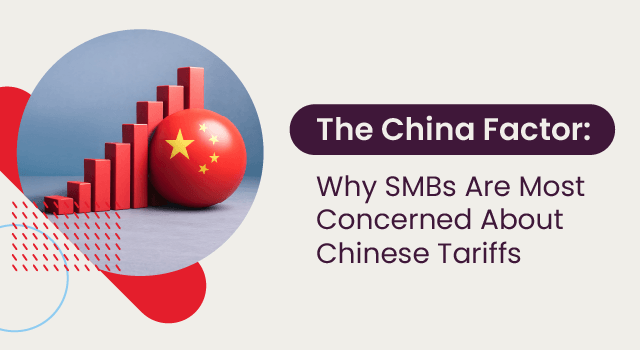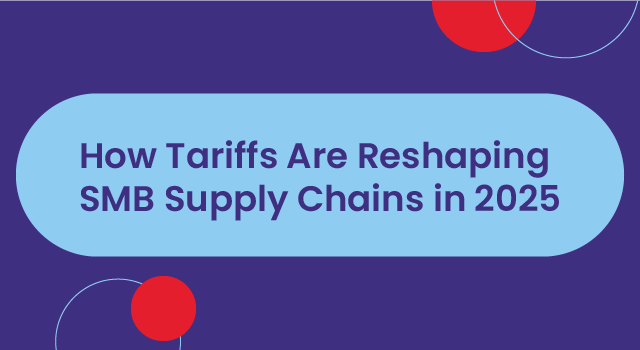What’s in this blog?
Inventory is the life force of most businesses. It ensures that you have products to sell when your customers demand them. Yet, inventory is a double-edged sword. Keeping inventory does not come cheaply. Storage space, insurance, handling spoilage, and obsolescence add up over time.
Inventory also ties up capital you could use for other projects, like business expansion. So, where is the sweet spot between satisfying customers and holding optimal stocks?
The Inventory Turnover Rate (ITR) can reveal how you compare with industry leaders. The ITR is a vital metric that tells you how often your inventory is sold and replaced each period. Use it to track inventory changes and improvements in inventory efficiency.
Here’s how it works.
Demystifying inventory turnover ratio (itr)
The inventory turnover rate measures how quickly a business sells and replaces its inventory. It is a vital indication of operational efficiency. Calculate the inventory turnover rate by dividing the Cost of Goods Sold (COGS) by the average inventory over a period, typically one year.
The formula looks like this:
Inventory Turnover Rate = COGS/Average Inventory
Where: COGS is the total cost of goods sold over a period, usually one year.
Average inventory is the average stock on hand over a period, usually a year. This may be an average of the opening and closing stocks or stock holding at several intervals.
Let’s look at an example for clarity:
An appliance retailer has the following metrics:
- COGS: $1,000,000
- Starting inventory: $250,000
- Ending inventory: $180,000
Average inventory = (opening inventory + closing inventory)/2
- Average inventory = ($250,000+$180,000)/2 = $215,000
ITR = COGS/Average Inventory
- ITR = $1,000,000/$215,000
- ITR = 4.65
The appliance retailer turns their inventory a little over four and a half times.
What is a good inventory turnover ratio?
A good inventory turnover ratio is industry-specific. A lower rate doesn’t necessarily indicate efficient inventory management. The retail inventory turnover rate may, for example, be lower than the inventory turnover in a factory that manufactures to order.
Organizations must find a balance between running out of stock and having too much. They must have enough stock to keep customers happy and operations running smoothly. Yet, carrying excess inventory incurs unnecessary holding costs. These include warehouse space, insurance, and obsolescence. The ideal inventory turnover ratio must accommodate demand and lead time variability.
Implementing efficient inventory processes while regularly tracking the ITR can help you meet optimal stock levels.
EOQ formula and its role in inventory management
The Economic Order Quantity EOQ establishes a balance between the costs of placing an order and inventory holding costs.
Order costs are fixed and include the cost of transport and order administration. Inventory holding costs cover storage, handling, insurance, spoilage, and obsolescence.
The EOQ formula is:
EOQ = √ (2 x DS/H)
Where: D is the annual demand over a period
S is the fixed ordering cost
H is the average holding cost per unit
The EOQ has shortfalls, but it is crucial for helping organizations find the order size that minimizes total inventory costs. It is usually paired with the Re-order Point (ROP). The ROP accounts for the demand during lead time. Safety stock covers variable supply and demand issues.
Inventory optimization techniques
Accurate, dynamic demand forecasting plays a pivotal role in inventory optimization. Forecasting systems must respond to changes in demand. These systems use historical sales data, market trends, and planned promotions to forecast future demand.
Modern dynamic systems include artificial intelligence and machine learning. They create high-level forecasts that account for seasonal trends and external elements.
Technology plays a crucial role in balancing inventories. It provides real-time stock level and demand visibility and automates order placement based on predefined parameters. Automation removes the human factor. It ensures on-time order placement without the risk of errors.
Inventory analysis identifies slow-moving and obsolete stock. Use it to optimize the inventory mix and release capital invested in inventory.
Inventory replenishment strategies
You have a choice of replenishment strategies. You must choose the best method for your business. Different inventory strategies significantly impact inventory turnover and efficiency. Once in place, the ideal strategy should optimize your inventory levels.
Inventory strategies include:
- Fixed Order Quantity: An order is placed for a predetermined quantity. A re-order point triggers the order. Safety stock covers demand and lead time variabilities.
- Fixed Time Period Ordering: With this system, you’ll place orders at scheduled times. The order quantity will change according to the on-hand inventories and the forecast demand over the next order period. It is easy to install and relies on batch ordering.
- Just-in-Time (JIT): JIT is often used in manufacturing environments. The demand is known, and the supply chain is reliable and well-established. JIT aims to keep inventories at low levels with frequent refills.
- Vendor Managed Inventories (VMI): The supplier manages the inventory at the customer’s premises and ensures replenishment according to the supply agreement.
These inventory strategies all have advantages and drawbacks. When choosing the best strategy for your business, consider factors like lead times, storage capacity, product shelf life, and ordering and holding costs.
EOQ Calculator: a tool for inventory management
An EOQ calculator simplifies the process of finding the most economic order quantities. It saves time and effort, and since manual calculations are prone to errors, it reduces mistakes.
The EOQ calculates the order quantity that balances the fixed ordering cost with the cost of holding inventory. It helps businesses to make data-driven decisions and lowers the risk of carrying too little stock and the cost of carrying too much. An EOQ calculator encourages you to place more frequent smaller orders where costs allow. This reduces the costs of slow-moving and obsolete stocks and should lead to a healthier inventory turnover rate.
You can lower your costs and cash flow requirements by placing fewer orders and optimizing your inventory holding.
Stock replenishment software
Many businesses have realized the benefits of investing in stock replenishment software. There are several types of software at different levels of sophistication. They include:
- Inventory Replenishment Software: These systems focus on automated order placement and recommended order quantities. They may include demand forecasting and supplier management systems.
- Warehouse Management Systems (WMS): A WMS goes beyond inventory replenishment. It includes layout optimization, real-time stock tracking, and automated picking and packing functions.
- Enterprise Resource Planning (ERP): An ERP includes all the business functions from ordering to manufacturing, finance, and sales. Inventory replenishment is one part of these systems.
Stock replenishment software will integrate with your inventory management system (IMS). Use it to automate your ordering systems and share your inventory data. Some systems will integrate with demand forecasting to adjust order quantities and reorder points in line with changing demand.
Automation improves forecasting and operational efficiency, reducing manual errors. Real-time information and integrated data analysis improve decision-making.
Calculating safety stock levels
Demand is often variable, and lead times tend to fluctuate. Demand surges and late deliveries could lead to stock-outs without a safety net. stock-outs mean lost sales and disgruntled customers who may move their business to your competition.
Businesses must protect themselves from stock-outs by carrying safety stock. Safety stock ensures smooth operations. It enhances customer satisfaction by ensuring that stock is available when needed.
Regularly review and adjust your safety stock levels to accommodate changing market conditions.
There are two main methods for calculating safety stock.
Lead Time Demand
Lead time demand factors in average demand over the time it takes to receive an order. The formula is as follows:
Safety Stock = Average Demand x Lead Time + Buffer Stock
The buffer covers possible demand spikes over the lead time. This safety stock method offers a simple starting point for setting safety stocks for your inventory items.
Service Level Method
The service level method is more complex and requires the application of tables and formulas or statistical software. The service level is the probability of a stock-out over a predetermined period. You need historical sales data and an estimate of lead time variability to establish the service level.
Gain a Competitive Advantage with Optimized Inventories
A good inventory turnover rate signifies a well-managed inventory system with several benefits. These include lower costs, improved cash flow, happier customers, and reduced obsolescence.
Dynamic inventory optimization systems can help you to improve your profits and gain a competitive advantage. Integrated replenishment systems automate order placement, removing human error. They can streamline the ordering process and minimize the risk of stock-outs. Real-time data provides insights, leading to better decision-making.




